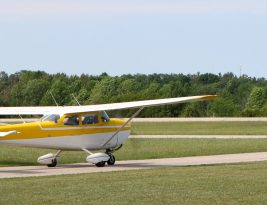I am sure you have been waiting all week for Part II of the CFI Brief on the Pitot-Static system. So here it is: today we will get into some of the principals of operation of each of the three pitot-static instruments found in the cockpit: altimeter, vertical speed indicator,
…Category: Flight Instruments
View All CategoriesToday’s posts is the first part in a two part series on the pitot-static system and associated pitot-static instruments. We will begin by covering a quick general overview of the pitot-static system as seen in the picture below.
The pitot-static system is responsible for the operation of the airspeed indicator,
…Today, we’ll go over the airspeed indicator (ASI). This explanation comes from the FAA textbook Pilot’s Handbook of Aeronautical Knowledge.
The ASI is a sensitive, differential pressure gauge which measures and promptly indicates the difference between pitot (impact/dynamic pressure) and static pressure. These two
…The airspeed indicator (ASI) is an important component of the pitot-static instruments. As you can imagine, there are numerous speeds for each aircraft. It can be tough sometimes to remember all those V-speeds, particularly if you are transitioning between multiple aircraft with different performance characteristics.
The ASA
…Safely flying in any aircraft depends upon not only a pilot’s ability to interpret and operate flight instruments, but also to recognize when an instrument is malfunctioning. This week, we’ll take a look at common issues associated with pitot-static flight instruments: the airspeed indicator (ASI), altimeter, and vertical speed indicator
…

